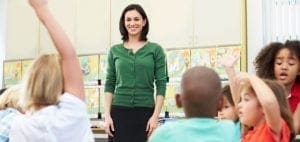Collecting data on a child involves observing a child and using a method to gather evidence that can help identify and understand the behavior of a child. A commonly used method of recording data on a student is called narrative recording.
Narrative data should include:
- What the teachers are doing.
- What the students are doing.
- How the students are participating
- (engagement level) in the class discussion/activity.
- How the students are interacting with one another.
Details of the events in chronological order. Below are advantages and disadvantages for using this particular method of observing children:
Advantages
Narrative recording involves providing an ongoing description of the events that take place during an observation as they occur in real time. It is not limited to a particular incident, but rather encompasses all events taking place in a given time frame. It focuses on behaviors of all students, as opposed to a particular behavior of one child. A narrative observation includes recording details in a sequential manner that helps the observer better understand not only what behaviors took place but also the context in which the behavior occurred. This can be used as evidence to support claims you make and to provide suggestions when you talk with the teacher after the observation. Accurately written notes in chronological order, along with specific examples about the student’s behavior, can be used to discuss appropriate strategies or techniques that can be used as part a behavior intervention plan and increase a child’s attention, time on-task, and overall learning in the classroom.
Disadvantages
Information in narrative recording does not typically contain quantitative data (e.g. the number of times a child raised his hand, the number of tantrums a child has, etc.). It involves a general (or specific) description of events occurring in a particular setting. Recording data in narrative form is time consuming and works well for observing one student. It may be difficult for the observer to track all student behavior in the classroom, especially in group work. The observer typically sits in isolation away from the students while taking notes. A student may be aware that he/she is being observed which could trigger the student to be on his/her best behavior. At the same time, this can prove that a child is able to control his/her behavior in that setting.
Considerations
It is important to understand that observations of this nature are only snapshots of a student’s behavior in a certain setting at a given moment in time. There may be specific times during the day or week, certain classes, specific students that trigger positive or negative behaviors displayed by a student. These kinds of observations should be used in combination with record reviews, interviews, rating scales, teacher evaluation forms, and formal and informal testing when effectively making an evaluation.
This post originally appeared on About.com
https://www.parentingspecialneeds.org/article/school-success-tips-parents-professionals/
https://www.parentingspecialneeds.org/article/teachers-school-professionals/
You May Also Like
- “Instruction Manual” for Your Child With Special Needs [1]
- Financial Planning: For Those Who Are at the Starting Line [2]
- 8 Ways to be a Great Advocate For Your Family Member With Special Needs [3]
- Embracing Your Child’s Best Ways of Learning 12 Different Ways to Learn [4]
- School Success Tips from Parents & Professionals [5]
- The Importance of Parents and Professionals Partnering [6]
- What Special Education Teachers and Professionals Want You to Know [7]
- Parent-Professional Partnerships {Tip 28 of 31} [8]
- How Parents Can Work Together to Help Their Child With Their Education [9]
- Can I Get Help with My Child’s Behavior? [10]
- Whether it’s Your First IEP or You’re a Pro: 10 things to Cover at the Meeting [11]
- IEP… I Do’s Building a Viable Home-School Relationship – It’s like a Marriage [12]
- Beyond the IEP Team: 6 Tips for Parent Participation at School [13]
- A PATH to the Future [14]
- Advocacy Tips for the Long Haul [15]
- How to Set Clear Goals and Plan Naturally [16]
- Developing Your Own Network [17]
- How to Help Your Child Cope With Incontinence At School [18]
